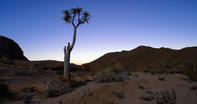Gordon’s Bay
Upon his return from exploring the Mouth of the Orange River in 1779, Colonel Gordon became the commander of the Dutch Garrison at Cape Town. He continued to travel, draw and categorise the various natural wonders that he saw. The plant Hoodia gordonii is named after him.

Then, in 1795, Napoleon started making trouble in Europe and overthrew the royal house of Orange. The British took in the exiled Dutch king and sent a fleet of ships to take over the Cape on his behalf. Gordon’s loyalties were thus torn between the dethroned royal family and his new Napoleonically-controlled masters, the Dutch Republic. After the British defeated the Dutch battalions at the Battle of Muizenberg, Gordon’s indecision was roundly criticised.
He was also suffering from ill health and other personal problems. And so, in 1795, shortly after the Dutch surrender, RJ Gordon killed himself. Gordon’s Bay, near Cape Town, is named in his honour. In the years that followed, several other eminent scientist/explorers from all over the world visited Namaqualand and the Richtersveld.
These included the somewhat overblown ornithologist Francois le Vaillant (1783), Carl Ludwig Phillip Zeyher (1830) and Johann Franz Drège (1833/4). The latter is known as the ‘father of SA phytogeography’ (the distribution of plant species). This may not sound like the most impressive appellation, but more than 100 plants have been named in Drège’s honour – which isn’t bad going.
The Appeal of Namaqualand
In the 20th century, the appeal of Namaqualand, and the Richtersveld in particular, continued to attract collectors intent on identifying new species.
These include the brothers Rudolph and Max Schlechter, Dr. Louis Leipoldt and Selmar Schönland – a big lover of succulents, as are we all. Interestingly, most of these researchers were from foreign countries, and their collections were sent to institutions overseas.
South African botanical studies really got started only after businessman and amateur botanist Harry Bolus established a chair in Botany at the South African College (now called the University of Cape Town) in 1902.
The first person to assume the Bolus Chair was Harold Pearson, who had an abiding interest in the plants of Namaqualand. He went on two trips to the region (in 1908-09 and 1909-10) and collected lots of new information and specimens. Pearson went on to become the first director of Kirstenbosch Botanical Gardens in 1913 and helped create the National Botanical Institute (now called the National Biodiversity Institute). The rare Aloe pearsonii is named after him.